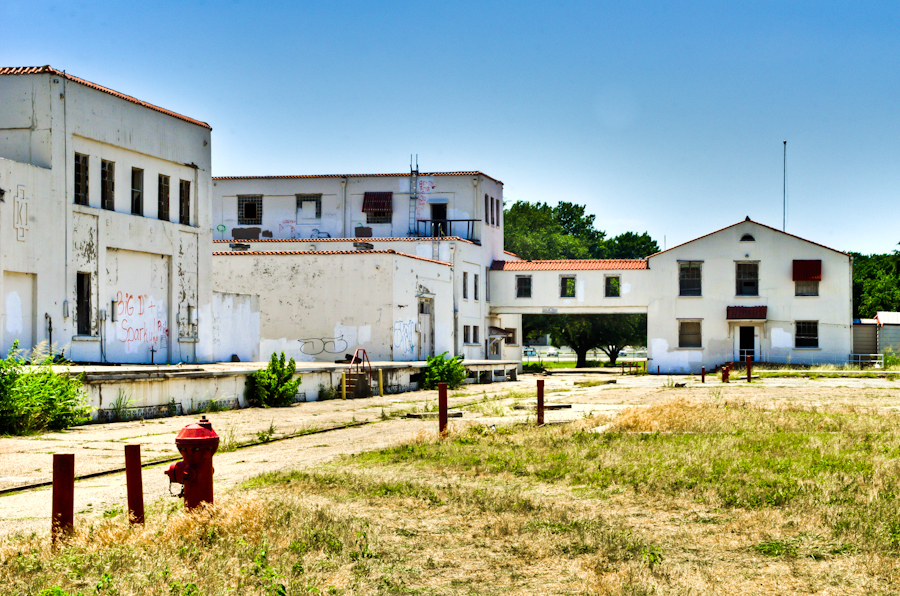
On the north side of Fort Worth, where the city lines start merging into Saginaw, there's an abandoned building complex that has sat vacant for years. I drive by this building at least once a week wondering what the story is behind it, and my desire to get inside and shoot it increases more and more. I've been told several stories of what the complex had once been. They range from an asylum, a weapons factory, and even an orphanage during World War 2.
The property recently went up on the market, and an address for the property was finally posted. After doing a little bit of research, it appears that several of the buildings ar protected by the Texas Historical Commission. According to their data:
"A complex of buildings used as administrative offices, originally constructed as helium plant. The United States government began construction of the Helium Production Plant in 1918. The plant was to supply helium for inflating blimps and dirigibles to be used during World War I. The Plant received natural gas from the Petrolia field near Wichita Falls, a field from which the Lone Star Gas Company had supplied the Dallas/Fort Worth area since 1910. The Petrolia gas field had a particularly high helium content. Built at the cost of $3,500,000, the Fort Worth plant was the first in the world designed to research and extract helium from natural gas. Although the plant was not completed until 1921, the Fort Worth plant continued to receive government support to research the helium extraction process until 1928. In addition to the three main buildings constructed for the helium plan, the project also included creating a lake (still present in the complex) to provide water for cooling the plant's generating equipment. The generating and helium separation facilities were originally in what is now Building 2, a 200 feet long rectangular, concrete structure. This two-story building has a third story central monitor. Larger then Building 2, Building 3 (290 feet long) housed the compression and bottling equipment. Building 1 was built as offices for plant officials; an addition to Building 1 in the 1940's doubled its size and connected it to Building 2 with a causeway. When the federal government closed the helium plant in 1928, the Airways Division of the Department of Commerce converted the buildings to an assembly plant for radio transmitters. During 1947-48, the newly formed Civil Aeronautics Authority remodeled the helium plant structures into office space for the agency's Southwest Regional Office. The remodeling included adding the awnings and red tile roof parapets to Building . The conversion of the helium production plant to offices space is significant as an early government financed adaptive use project. In 1957, Federal Aviation Agency (FAA), an independent agency, assumed the CAA's responsibilities. Today, the FAA Southwest office employs 400 people and serves a five state area. The original helium plant buildings are potentially eligible for the National Register because of their historic significance."
A few days ago I lucked out and had a quick chance to run through the complex and take some shots. I had to be in and out in a flash, so I didn't get to fully explore the area like I wanted to. But I made contact to return at a later date and take the time to do some real shooting.
These photos are all HDR processed.
















